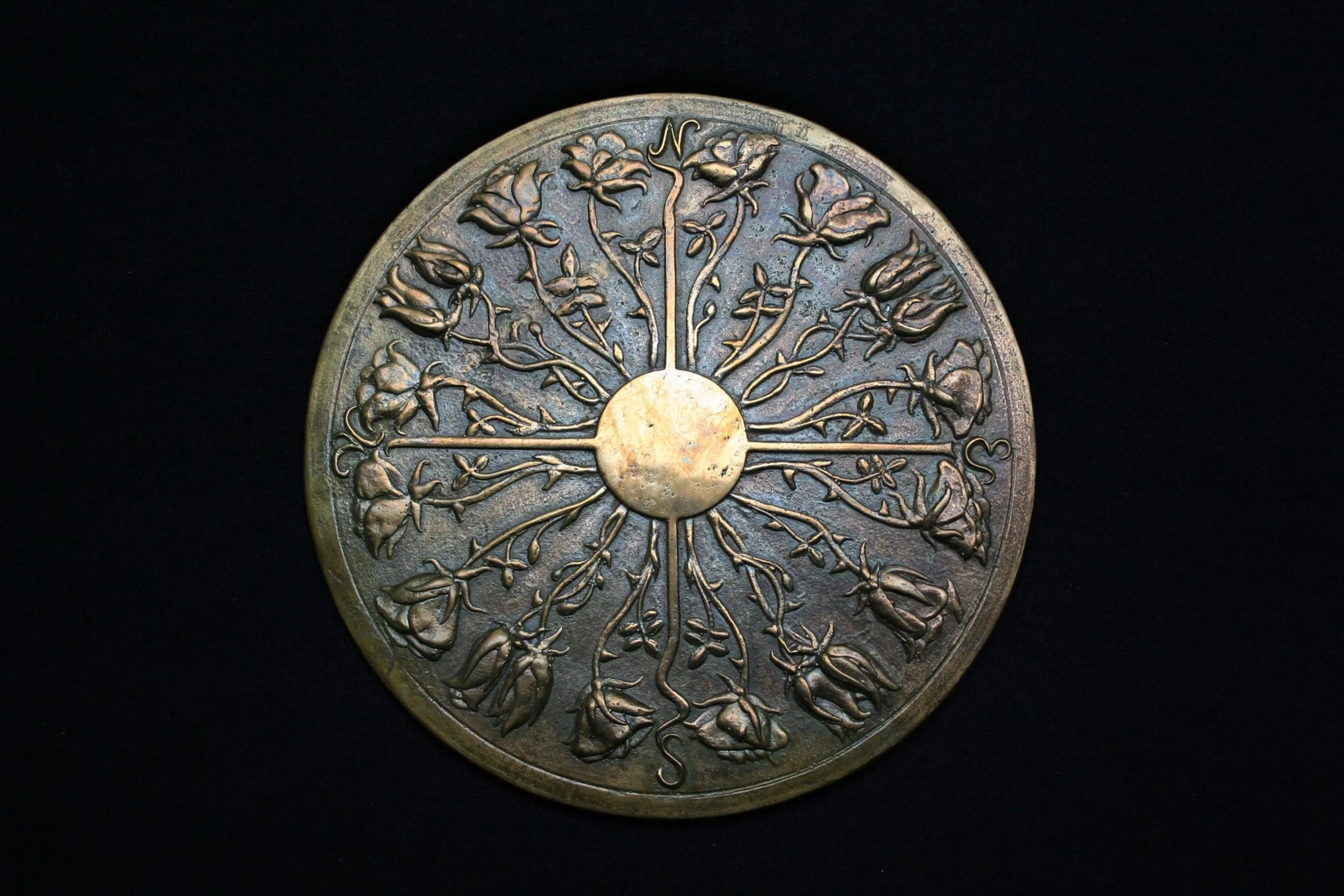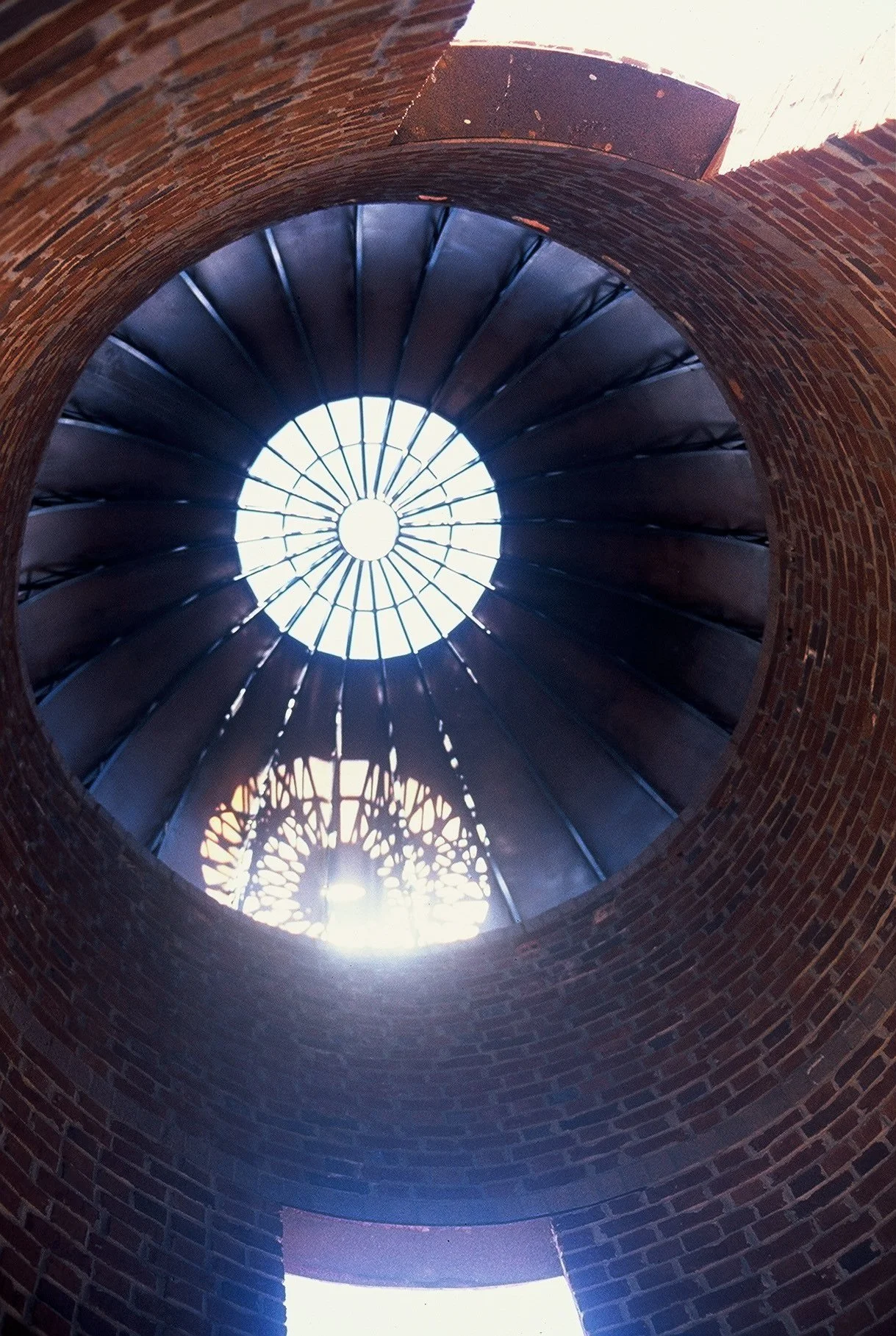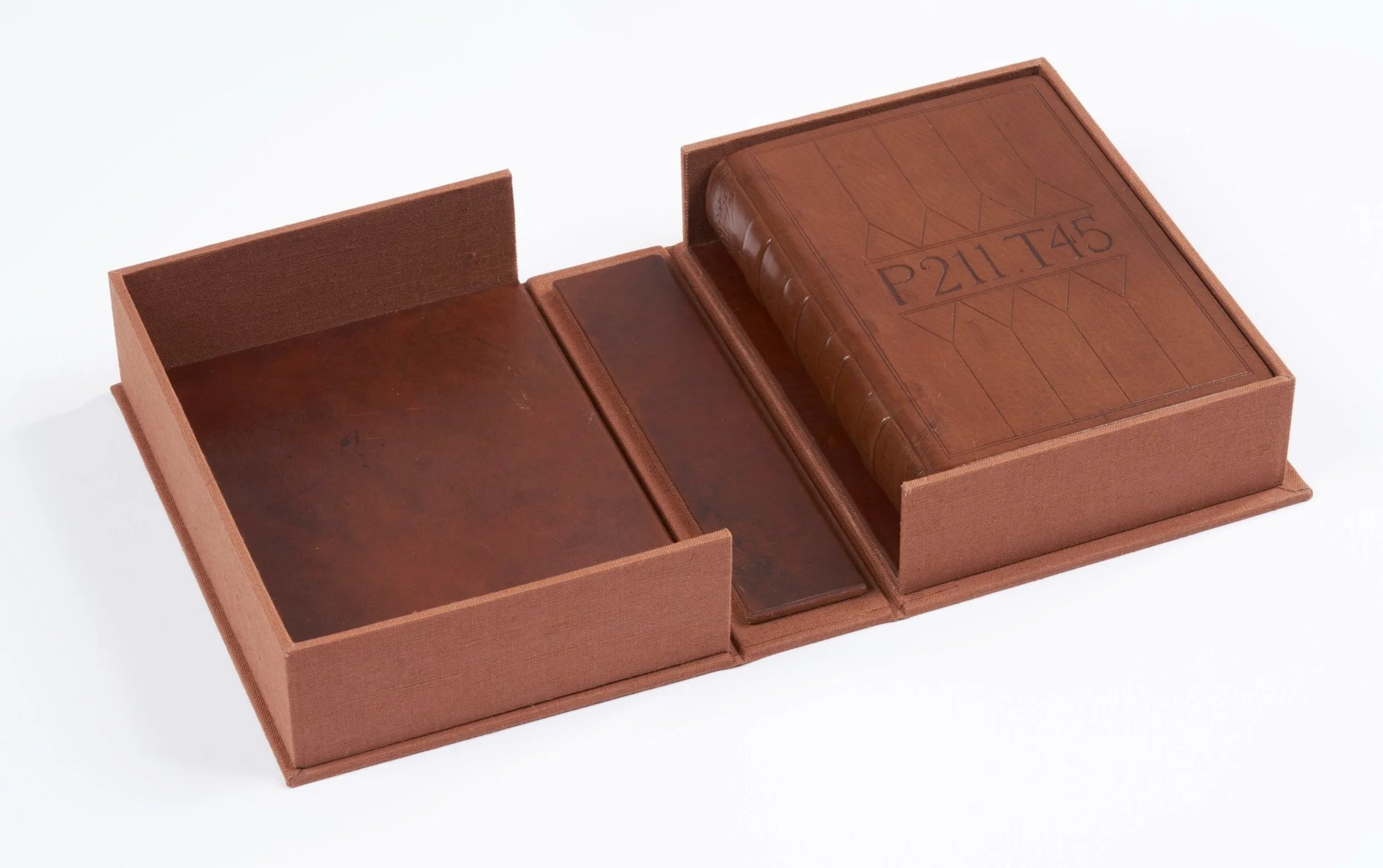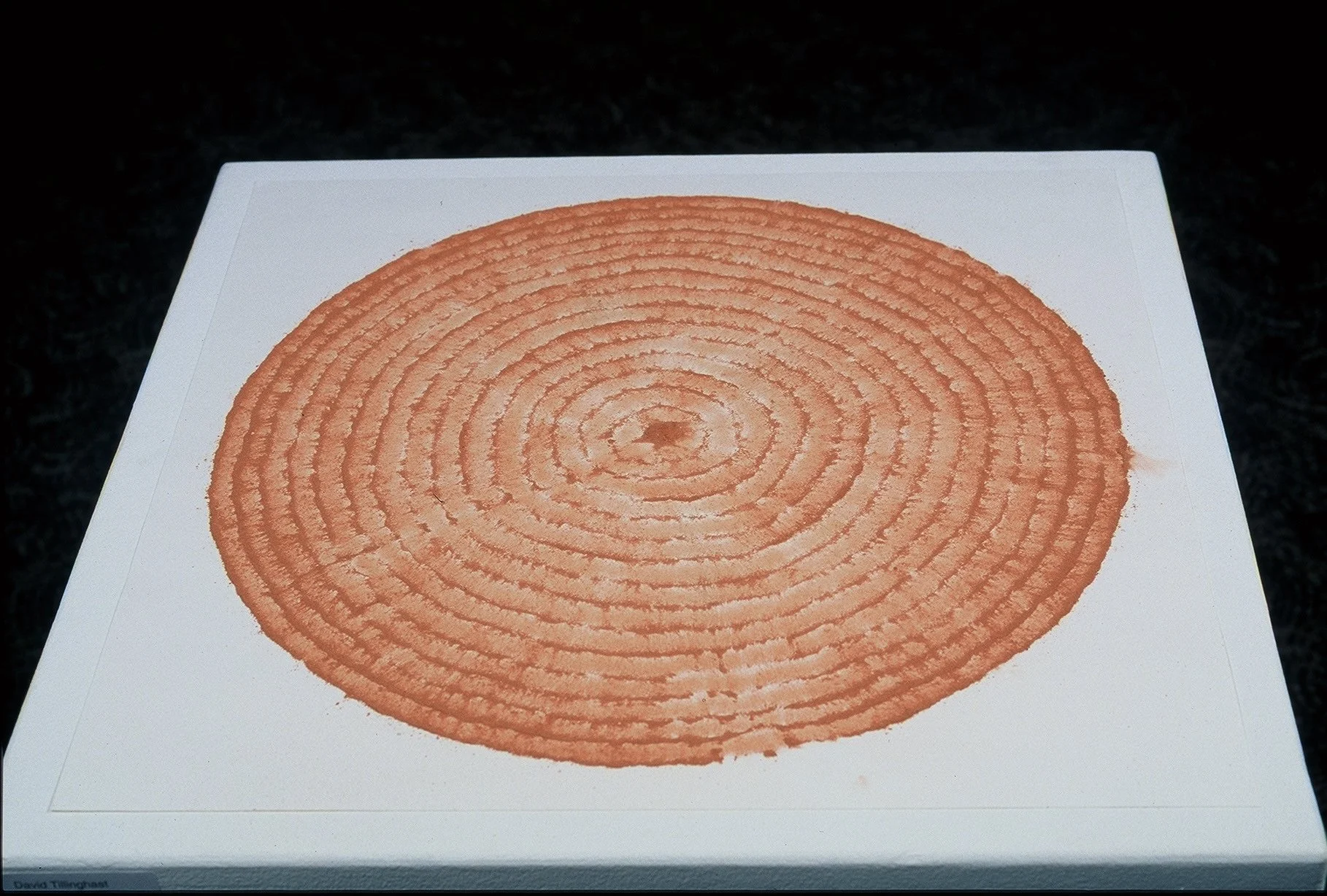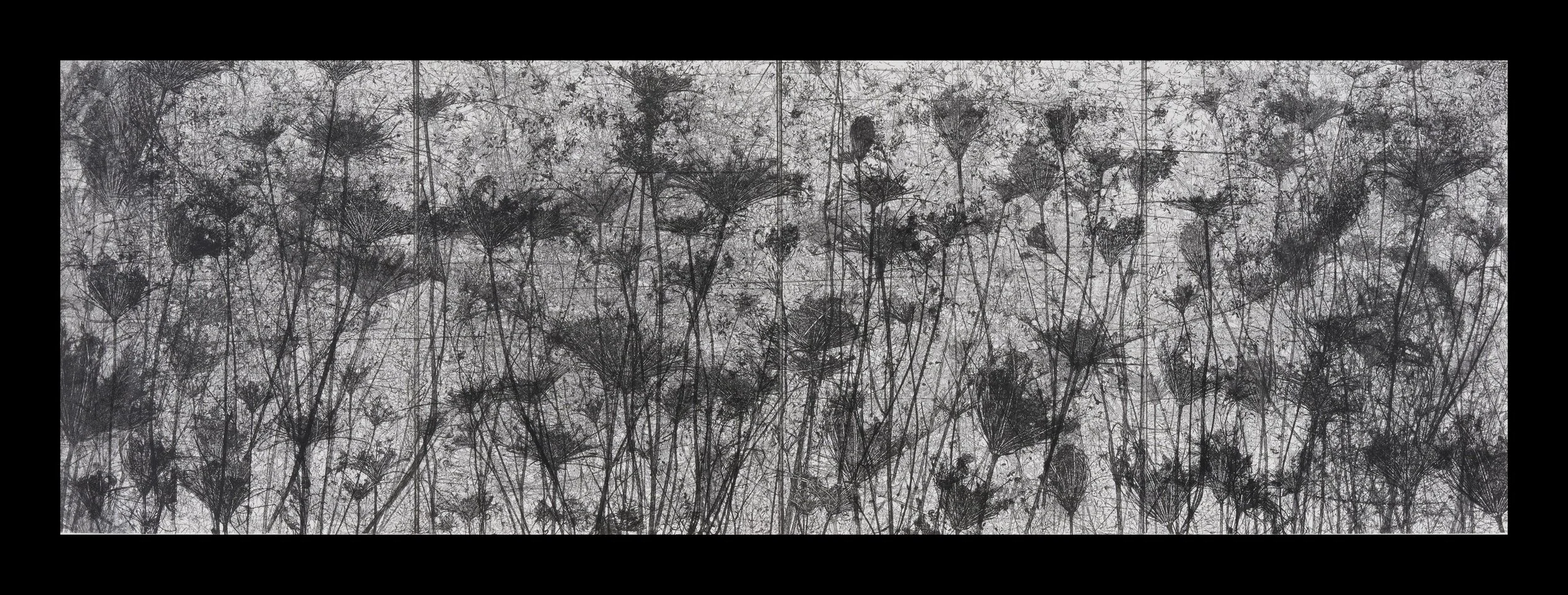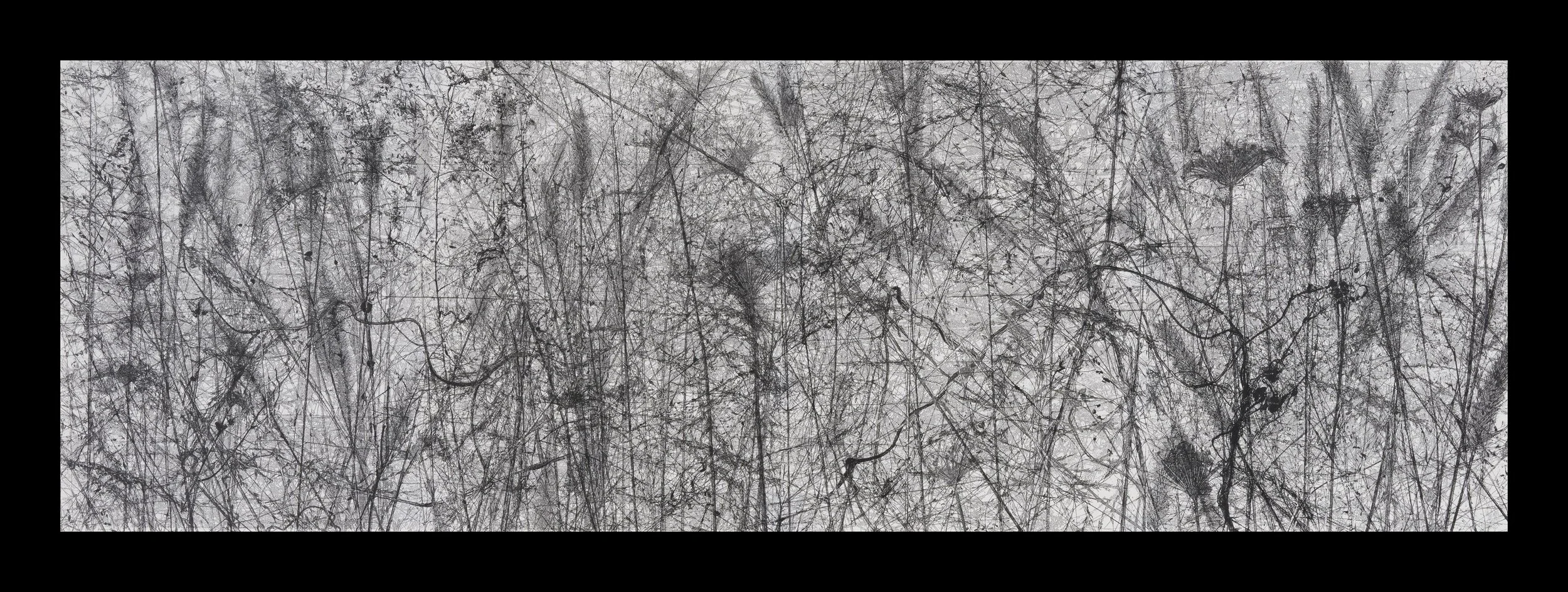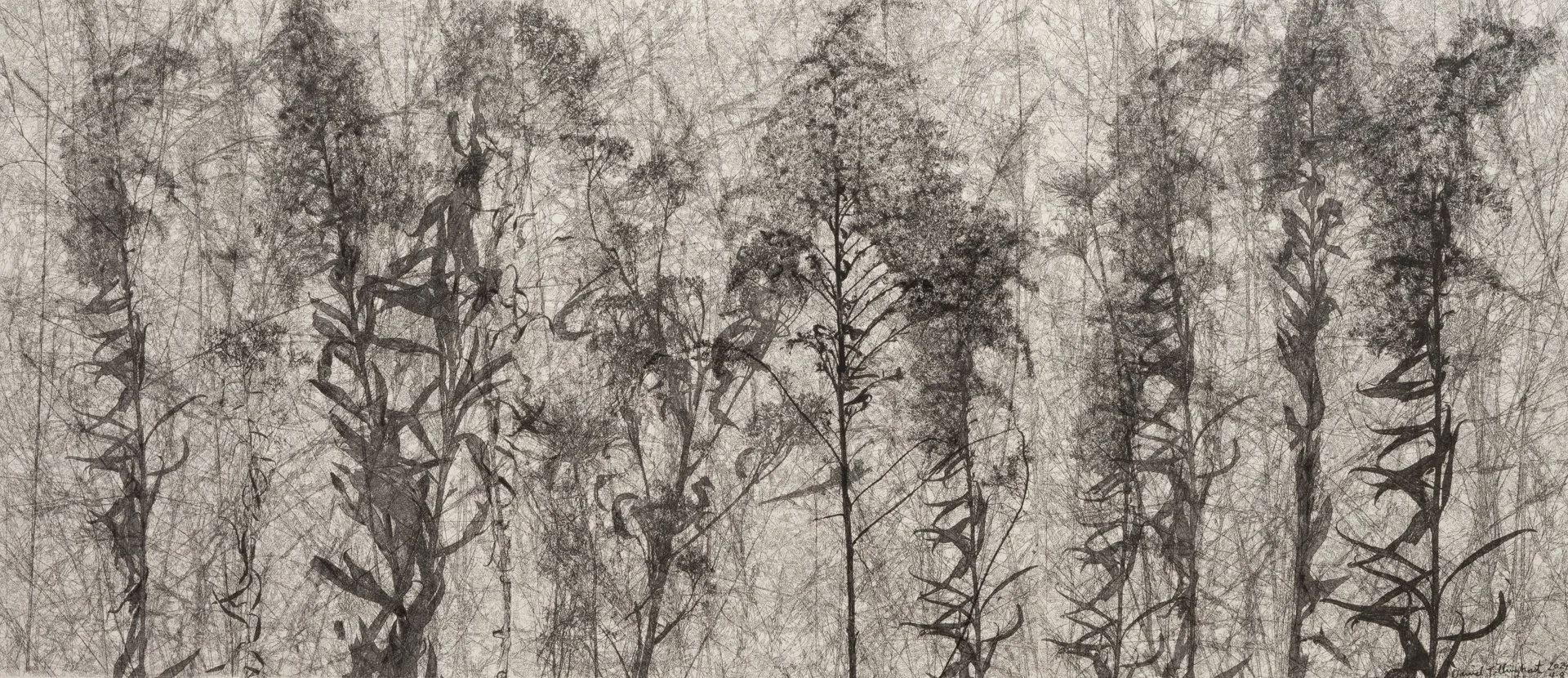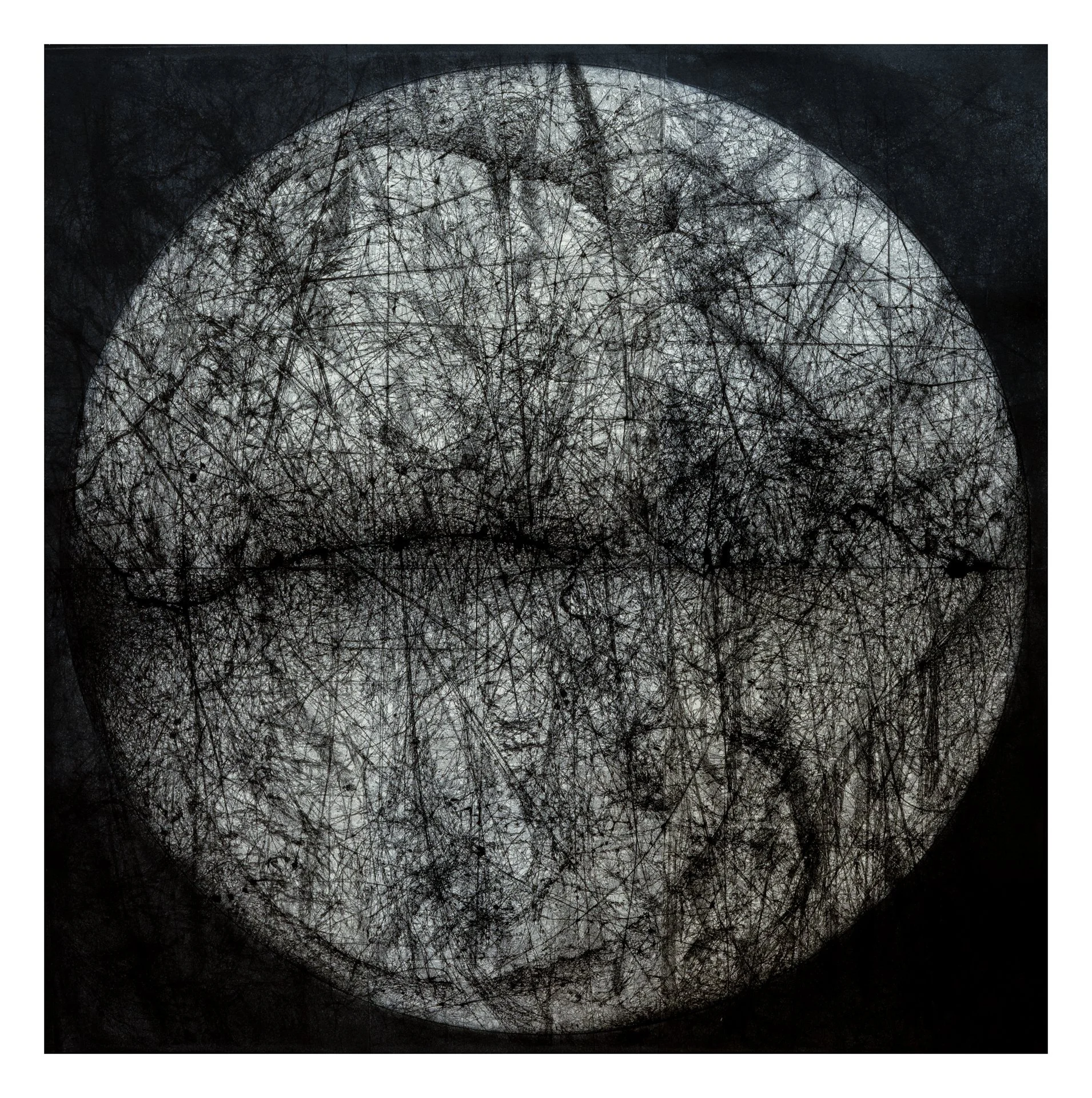BELL RHODODENDRON
THE STINGING BEE
FOUR ROSES OVERTURE
FOUR ROSES OVERTURE
CARRIAGE
ANCHOR HOLD
MEETING
VESTIBULE
P211.T45, THE SILO – For more information, visit P211T45.com linked in the top navigation.
P211.T45, THE OCULUS
P211.T45, THE BOOK
P211.T45, THE BOOK
P211.T45, THE BOOK
P211.T45, THE BOOK
HOLLOW
DIRT RINGS
COMPASS ROSE
2-D Works
SITE-SPECIFIC SCULPTURE:
BELL RHODODENDRON, 2007, Hendersonville, NC. Granite, moss, dirt, steel, bronze and underground bell. This sculpture was commissioned by the Kellogg Center and Nature Trail, an extension of UNC Asheville. It features an underground chamber and bell that can be rung by lifting the central bronze piece.
THE STINGING BEE, 1999, Appalachian State University. Dirt, grass, steel, bronze and bell. This is the first of my underground bell projects. The piece was a part of the 14th annual Rosen Outdoor Sculpture Competition. At the time, the show promoted a site-specific slot along with the pre-constructed pieces. The piece won first place, chosen by (then) chief curator of the Hirschhorn Sculpture Garden, Kerry Brougher. The title is borrowed from a folk song of the region about the universal theme of unrequited love.
FOUR ROSES OVERTURE, 2007, St. Louis, MO. Pink granite, cement, stone, steel, bronze and a bell chamber. This sculpture was commissioned by a neighborhood committee for the Samuel Kennedy Park in the Central West End neighborhood of St. Louis. The material, pink granite, is ubiquitous in the area. The famous Cahokia mounds are nearby, along the Mississippi, as well as the beautiful Cathedral Basilica of St. Louis. These two dome-shaped marvels intrigued me. I thought the granular pieces of crushed pink granite were a bit like the tesserae in the mosaics of the inner dome of the cathedral. The piece was designed as part of a playground for children. The underground bell can be heard by dropping a stone through the central hole. What child can resist dropping something down a hole?
P211.T45, 2001, Clemson University, Clemson, SC. Masonry, steel, bronze, cement, paper, toner, and ink. Commissioned by Clemson as a part of their site-specific sculpture program, Art Partnership, (now called In Site Atelier), the piece encompasses two distinct areas on the campus: the grounds of an agricultural building and the main, campus library, Cooper. The library component is a book I made compiled of multiple prints of wild weeds and grasses of the area. Please see P211T45.com for more information on this piece and visit the University’s website. (As the maker of the piece, it has been very interesting to witness how it has evolved and taken on new meanings over the years.)
In 2023, I was commissioned by the University to make a second volume of the book and it can be seen in the Emery A. Gunnin Art and Architecture Library in Lee Hall. Though some of the imagery is similar to that in the original, this is a completely new book. The piece continues to grow.
HOLLOW, 2006, Rocky Mount, NC. Saplings, concrete. This piece was a part of the annual outdoor show, Sculpture Salmagundi. I found an area slated for development and cut down the saplings for the project. I see it is a 3-d sketch for a piece I’ve yet to make permanent. A hollow, cast concrete form is situated in the middle of a small grove of trees. I was intrigued by the idea of the density of darkness contained within the concrete work juxtaposed with the more open grove of trees.
STEEL WORKS:
CARRIAGE, 48” x 35” x 33,” steel.
MEETING, 42”x 23” x 23,” steel, hair, wax.
VESTIBULE, 74” x 38” x 40,” steel, air.
ANCHOR HOLD, 7 3/4” x 52” x 29 3/4,” steel, wood, red velvet.
2-D WORKS:
These are mixed media works on paper.
The process interests me with this body of work. I start with direct photocopies of the material, (wild, roadside weeds in this case), and build a kind of lexicon. I then make copies of these copies in successive layers (syntactical arrangements) onto an archival substrate. I think of this initial stage as a sedimentary layer of information.
Once something like a roadmap is laid out before me, I will begin to interlace India ink and other archival inks with the toner imagery. I think of this in terms of a minimalist music composition in that I am only adding what is necessary to illuminate some aspect of the chaotic layers of weedy imagery. A kind of hypnosis happens. Sometimes only a few dots or lines of dark India ink will do. The final image resides on cotton paper.
There is a random element in the process. I don’t know exactly where all of the intersections of stalks, leaves, etc. will occur. However, like Jackson Pollack said of his work, “there are no accidents.” Besides having a mental picture of where the work is going, he has enough of a handle on his flying threads of paint that he can, deftly, control (mostly) where they will land, despite the numerous “accidents” that do happen. In my case it is fascinating to see how random layers of toner begin to build and blend and coalesce into an illusion of depth. Therefore, the randomness is more metaphorical to the overall plan.
My mark-making throughout, though certainly present, sometimes seems incidental to the overall thrust of the process, such that I’m not sure if I’m a counterfeiter, ultrasound technician, archaeologist, calligrapher, cartographer, whatever, (or if I am even there). But, in the end I think the process is analogous to the way our brains piece the world together, flashing and overlaying with constant input.
Another note: Plato’s “Allegory of the Cave” has always intrigued me, especially in regards to this body of work. The idea that the prisoners in the cave are only seeing shadows of the actual objects (cast by the light of a fire behind them) is fitting. The mechanism of the copy machine, with its beam of passing light, mimics (sort of) Plato’s scenario. “Is it real, or is it Memorex,” often flits through my mind. But here, at least, there is the bonus of receiving the residue of the objects’ “shadows” in toner, though, probably much to Plato’s chagrin, with each successive copy the image moves further from reality.
Finally, I want to be clear that each of these pictures is a one-off. They are not prints in the traditional sense in which I would make a numbered series. And though I use a copy machine to get started, the work is pieced together in a traditional way, ie, without the aid of any digital technology.
